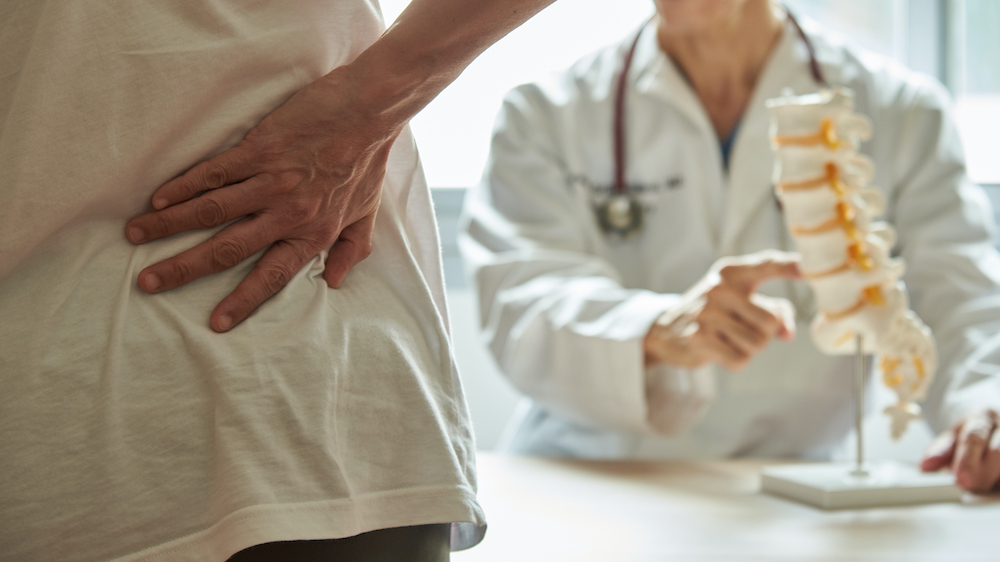Back and Spine Health

If you are experiencing the common symptoms of sciatica, you may be wondering what exactly is the problem. In this article, we will discuss the causes, symptoms, and treatment options for sciatica. Hopefully, this information will help you find the best way to manage your condition.
Fortunately, sciatica is very treatable and often resolves itself over time. But if you experience more serious symptoms or are unable to control your bowel movements, you should contact your spine doctor in North Las Vegas, NV immediately.
Sciatica Symptoms
Patients with sciatica experience pain and weakness down one or both legs. They often have difficulty walking or standing. Sciatica symptoms often worsen during the first few weeks after onset, and can last for up to four weeks. Patients may also experience weakness and numbness in the affected leg, as well as bowel or bladder problems. If you’re experiencing any of these symptoms, seek medical attention immediately. The pain may be an early sign of a more serious underlying problem.
Treatment for sciatica may include over-the-counter pain relievers, ice, and heat. A doctor may prescribe exercises to strengthen the back muscles and restore spine flexibility. For the first few days, you should limit activity and avoid heavy lifting or bending over. Physical therapy is another treatment that can be recommended depending on the severity of your sciatica. The condition may require other treatment, such as medication or surgery. The right course of treatment will depend on the underlying cause of the pain.
Causes of Sciatica
There are several possible causes of sciatica. The problem usually stems from a problem with the sciatic nerve, which runs from the lower back to the feet and legs. In general, 10 to 40 percent of people will experience sciatica at some point in their life. While the exact cause of sciatica is unknown, there are several common treatments available for sciatica.
Among the most common causes of sciatica, herniated discs can cause the pain. Herniated discs occur when the center of a disc is forced out of its normal position, pressing against the sciatic nerve. This is caused by an injury, often from lifting heavy objects, or excessive pain. Herniated discs can also develop in the form of bulging or herniated disks, when the annulus of the disc is still intact, forming a pouch. The gel-like center of the disc will ooze out, causing pain. The most common cause of bulging discs is lifting heavy objects.
Treatments
Surgery is one of the most common forms of treatment for sciatica, and it is not without its risks. In addition to invasive procedures, spine specialists often recommend non-surgical treatments to alleviate the symptoms. Physical therapy and home exercises can help alleviate the pain, while spinal cord stimulator implantation surgery can correct problems in the spinal cord. For more information on sciatica treatments, consult your physician. You can also try out the treatment before it is fully committed to you.
Over-the-counter anti-inflammatory medications can help you relieve the pain caused by sciatica. You can also try applying ice or a heating pad to the affected area for at least 20 minutes each day. You can alternate hot and cold packs to get the most effective relief. NSAIDs (nonsteroidal anti-inflammatory drugs) can also relieve the pain caused by sciatica. Hot and cold packs should be alternated, as they provide different levels of pain relief.
Prevention
Preventing sciatica symptoms can help you avoid surgery and get back to your normal routine sooner. The first step is to identify the root cause of sciatica. The symptoms of sciatica usually fire up one side of the body, and can be difficult to diagnose at first. Your doctor may order a spinal X-ray to look for problems, such as a disk problem. MRIs and CT scans can also be done to identify bone spurs or an arthritic condition pressing on the sciatic nerve. Further tests may include nerve impulses and imaging of the spine.
A healthy lifestyle also includes regular exercise. Exercising your back and abs can improve circulation and keep the range of motion in your spine intact. You can also hire a physical therapist to help you create a customized stretching and aerobic exercise program. They can also suggest strengthening exercises. Performing exercises recommended by spine surgeons in North Las Vegas, NV that target your back and abdominal muscles will help reduce the risk of herniated disks. While exercising, make sure to do them correctly.